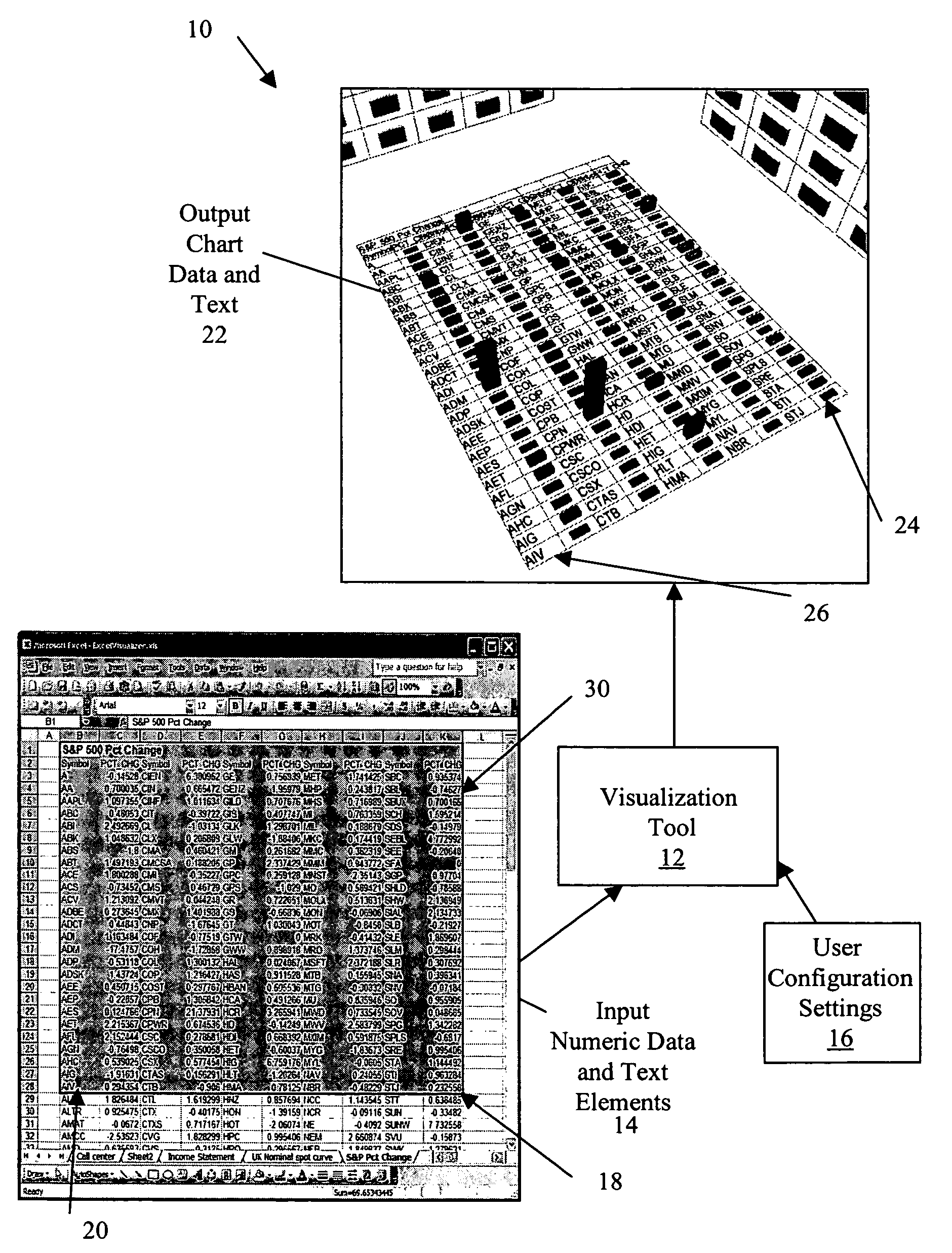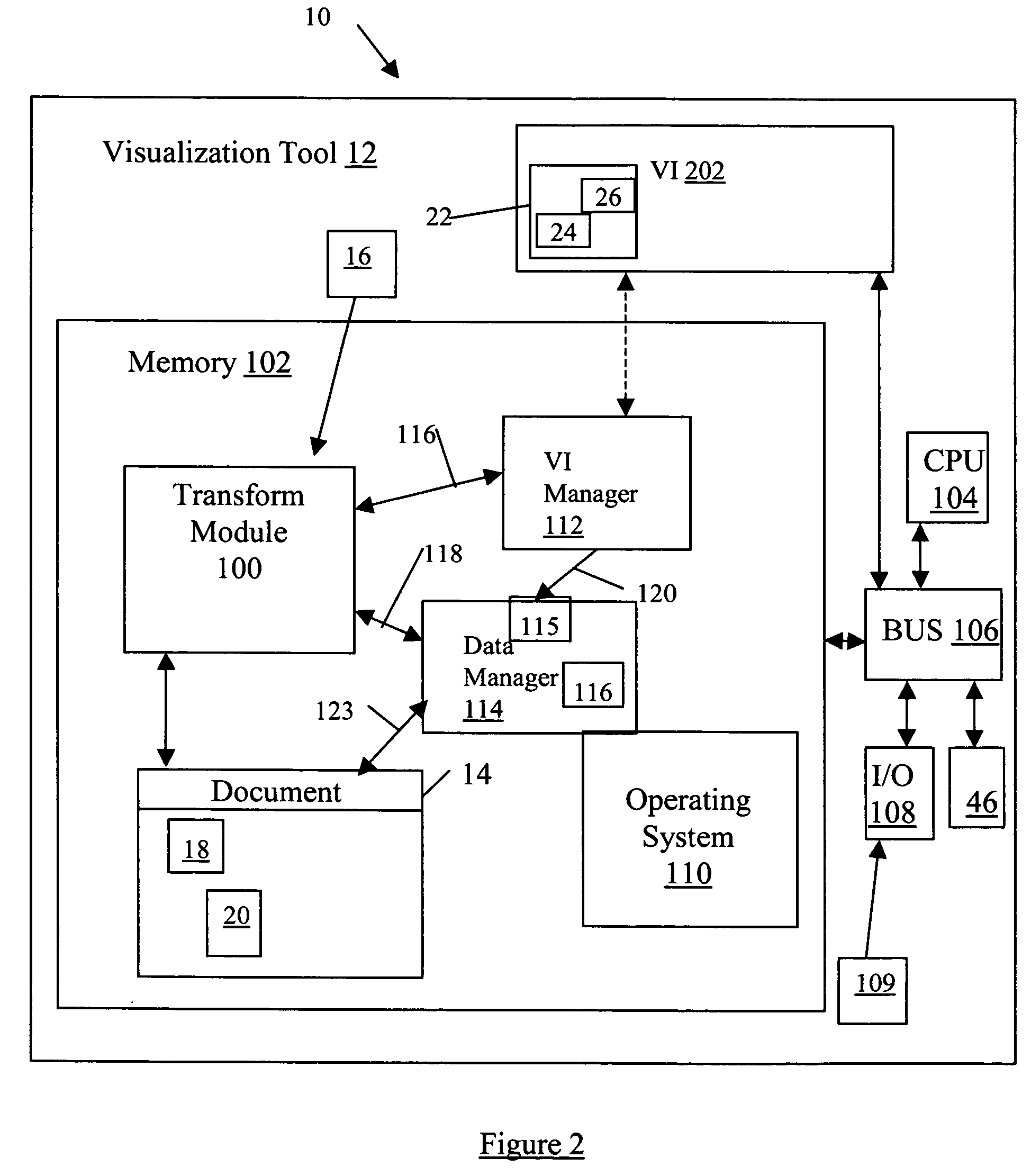System and method for visualizing contextual-numerical data of source documents as corresponding transformed documents
a technology of contextual-numerical data and transformed documents, applied in the field of visual presentation of non-numeric and numerical data, can solve the problems of manual formatting, significant limitations of currently available charting software, and resolution of difficulties in visualizing large data sets, so as to achieve efficient differentiation of numeric portions
- Summary
- Abstract
- Description
- Claims
- Application Information
AI Technical Summary
Benefits of technology
Problems solved by technology
Method used
Image
Examples
Embodiment Construction
[0040] The following detailed description of embodiments of the system and method for visual presentation of non-numeric and numerical data does not limit the implementation of the system and method to any particular computer programming language. The system and method for visual presentation of non-numeric and numerical data may be implemented in any computer programming language provided that the OS (Operating System) provides the facilities that may support the operating requirements of the system and method. A preferred embodiment is implemented in the C sharp computer programming language (or other computer programming languages in conjunction with Java, C / C++). Any limitations presented would be a result of a particular type of operating system, computer programming language, or data processing system and would not be a limitation of the system and method.
Overview
[0041] The following describes the system and method for automated two / three-dimensional visualization of a sour...
PUM
 Login to View More
Login to View More Abstract
Description
Claims
Application Information
 Login to View More
Login to View More - R&D
- Intellectual Property
- Life Sciences
- Materials
- Tech Scout
- Unparalleled Data Quality
- Higher Quality Content
- 60% Fewer Hallucinations
Browse by: Latest US Patents, China's latest patents, Technical Efficacy Thesaurus, Application Domain, Technology Topic, Popular Technical Reports.
© 2025 PatSnap. All rights reserved.Legal|Privacy policy|Modern Slavery Act Transparency Statement|Sitemap|About US| Contact US: help@patsnap.com



